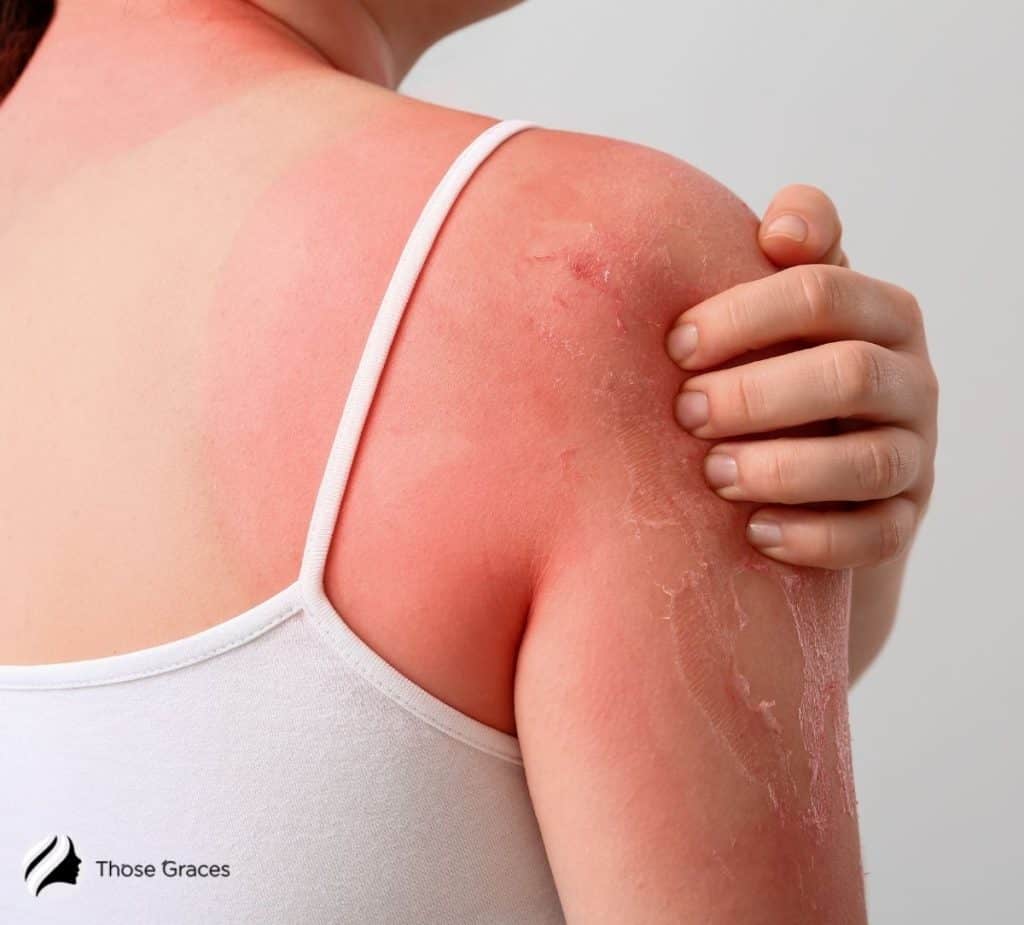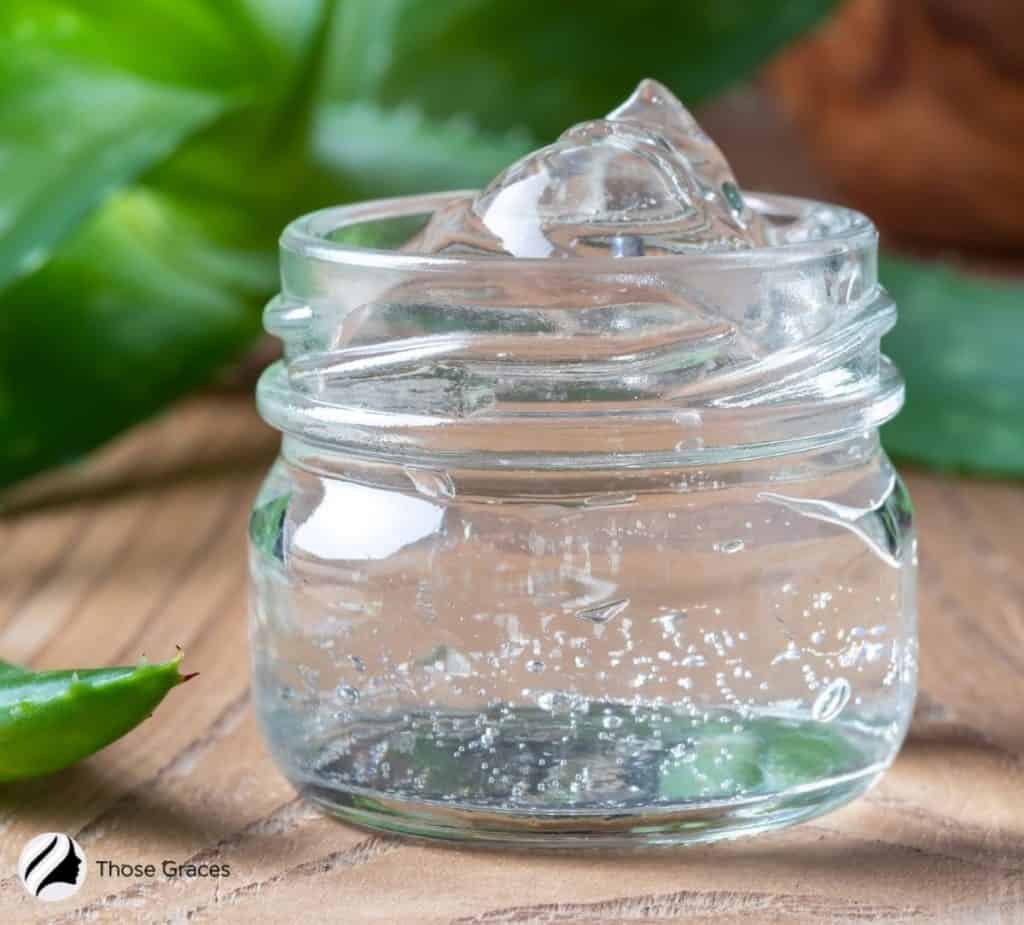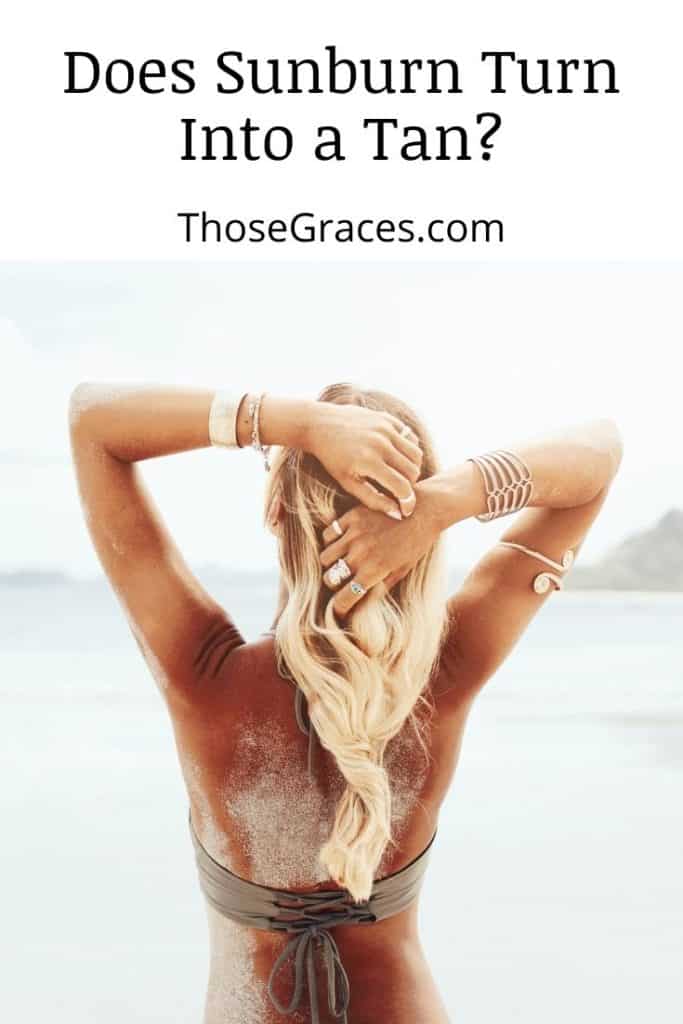Does a sunburn turn into a tan?
Many people think that your skin will eventually turn into a nice, even tan if you get burnt.
But is this true?
And if it is, how does this happen?
This blog post will explore the differences between sunburns and tans and answer some common questions about both.
I’ll also look at how to protect your skin from getting burned in the first place. So keep reading to learn more!
READ MORE: How to Tan Naked?
Table of Contents
Sunburn & Tan: Know the Difference
Skin tanning and sunburn can occur due to prolonged exposure to UV radiation (1). However, it’s somehow challenging to understand the distinction between the two.
So, for starters, the sun produces UV radiation, a type of electromagnetic energy. When you develop a sunburn, UV rays damage your skin, and the body responds to that damage.
The body reacts to the injury by increasing blood flow to the dermis’s capillary bed, allowing cells to heal the damage.
The redness in sunburns is caused by excess blood in the capillaries.
But when you develop a tan, your melanocytes produce melanin in response to UV light (2) from the sun. Melanin production is stimulated by ultraviolet light.
The pigment protects the cells from UV damage by absorbing the sun’s UV rays. Melanin production takes time, hence why most people can’t achieve a tan in a single day.
READ MORE: When is the Best Time to Tan?
What is a Sunburn?
According to dermatologist Dr. Geetika Mittal Gupta (3), sunburn is inflammation that occurs after a few hours of contact with the sun.

It is harmful to your skin and produces severe sunburn damage, leading to premature aging and skin cancer.
She adds that blistering, swelling, rash, and peeling skin are some of the prevalent symptoms of sunburn.
Bad sunburn turns the skin red in hours, and the sunburn will worsen over the next one to three days.
In this video below on her Instagram, Dr. Geetika Mittal Gupta explains the difference between sunburn and suntan and their effect on the different skin types:
READ MORE: Can You Go in the Sun After Botox?
What is a Tan?
A suntan is a symptom that UV radiation has damaged your skin.
Even a faint tan shows that the skin has boosted melanin production to protect itself from the harmful effects of excessive radiation.
When you get a suntan, your melanocytes produce melanin pigment in response to UV light from the sun. Ultraviolet light stimulates melanin production.
The pigment protects the cells from UV damage by absorbing UV radiation from the sun. Melanin production takes time, so how long does it take for a sunburn to turn into a tan?
To activate the melanocytes, you must be exposed to UV radiation for a decent amount of time.
READ MORE: What Are the Different Types of Tans?
The video below by Dr. Rashmi Ravindra, a Consultant Dermatologist and cosmetologist, explains further the difference between a tan and a burn;
TRY READING: Does Tanning Burn Calories?
Will a Sunburn Turn into a Tan?
There’s no guarantee that your sunburn will turn into a tan. Proper skin care is essential for turning a burn into a tan.
To avoid further scorching, you must get out of the sun as soon as possible and stay out of it.
You should also apply a high-SPF sunscreen to prevent further burning and help heal your skin.
In this case, your body’s response to harm, and injury to your skin layers produced by ultraviolet radiation, results in the golden color you get from sun exposure.
Keeping your skin moisturized with aloe vera can help keep it from peeling.
CHECK: Best UV Index for Tanning Outside
How Long Does it Take for a Sunburn to Turn into a Tan?
The type of skin determines whether you will get a tan. Melanin will tan your skin within 48 hours of sun exposure if you have a tanning-capable skin type.

The (FST) Fitzpatrick skin type (4) scale assesses a person’s skin type. Based on your skin color, hair, and eye color, the classifier calculates the amount of melanin in your skin.
It’s not a foolproof or 100% exact approach, but it can give you a broad concept of what your skin will do after exposure to the sun.
When Does a Sunburn Turn into a Tan?
According to Dan Wasserman, MD, a dermatologist in Naples, Florida (5), UVB rays, the same ultraviolet light that causes skin burns, are also necessary for tanning.,
The dermatologist further explains that UVB radiation is also necessary for the delayed darkening of pigments. This type of tanning lasts for ten to fourteen days after being exposed to the sun.
As a result, the healing of your sunburn may happen simultaneously as your tan deepens.
How to Get a Sunburn to Turn into Tan
There are things you can do to hasten the healing process of sunburns. I’ve compiled a list of the best ways to soothe your skin and help your sunburn fade into a lovely summer glow:
1. Use Aloe Vera Gel on the Sunburns
Aloe vera can help relieve the pain and discomfort of sunburns.
Use aloe vera gel on the affected area if you feel any discomfort. You can repeat this process multiple times each day to keep pain and irritation at bay.

With the aloe vera plant, cut the leaves of an aloe plant in half and squeeze the juice onto the affected for a natural healing effect.
2. Keep the Sunburned Skin Cool
The most obvious technique to relieve a sunburn is to apply something cool to the skin. It will make you feel good, but it will also help minimize swelling, redness, and soreness.
You can accomplish it in various ways, such as taking a refreshing bath or shower and using ice as a cold compress.
How To Treat Sunburn
It can burn if you don’t protect your skin from the sun with sunscreen and clothing. It’s critical to treat sunburn as soon as you see it to help repair and calm stinging skin. Here are some tips:
1. Apply a Steroid Ointment
When steroids come into touch with the skin, they can ease inflammation and pain, ideal for sunburns. Steroid ointments come in a variety of formulations.
One popular option is hydrocortisone cream. Apply a small amount to the affected area and repeat the process multiple times if necessary.
2. Take a Bath with Oatmeal
Despite its unusual appearance, oatmeal can be a helpful tool for treating sunburns and encouraging healing.
It has therapeutic characteristics like balancing the skin’s pH balance and calming itchy and irritated skin.
Also, you can follow these dermatologists’ suggestions in this video to help ease the pain of sunburns at home:
3. See a Doctor
Mayo Clinic’s (6) Lawrence E. Gibson, M.D. recommends seeing a medical doctor for sunburn treatment if:
- The sunburn is intense, and blisters are present and affect a significant area of your body.
- Your sunburn isn’t responding to home remedies.
- When you develop a skin infection, indicated by pus, swelling, or red streaks.
How Long Does a Sunburn Last and Take to Heal?
Sunburn is the body’s attempt to restore damaged skin, which can take a long time. How long until sunburn turns to tan and heals is determined by the severity of the sunburn (7):
- A mild burn lasts three days on average.
- Moderate burn is characterized by peeling skin and lasts about five days.
- A severe burn lasts for up to over a week. The individual should seek medical help.
- The first sensations of red and irritated skin will intensify 24–36 hours following sun exposure.
- The pain is usually at its worst 6–48 hours following the burn.
If your skin peels, it will start 3–8 days after exposure to the sun.
FAQs
How should I treat my sunburned face?
Why do some people burn and then tan while others only burn?
Conclusion
Does a sunburn turn into a tan? Not really; especially if you have fair skin tone, there’s no guarantee that your sunburn will turn into a tan.
With this guidance, you’ll be able to deal with the burn as effectively as possible.
If you’re going to be outdoors, ensure you’re using a broad-spectrum sunscreen with a high SPF to avoid getting sunburned in the first place.

Does sunburn turn into a tan? Please share your opinion below!
Resources
- 1. American Cancer Society. Ultraviolet (UV) Radiation [Internet]. Cancer.org. American Cancer Society; 2019. Available from: https://www.cancer.org/cancer/cancer-causes/radiation-exposure/uv-radiation.html
- 2. Brenner M, Hearing VJ. The protective role of melanin against UV damage in human skin†. Photochemistry and Photobiology [Internet]. 2007;84:539–49. Available from: https://www.ncbi.nlm.nih.gov/pmc/articles/PMC2671032/
- 3. Summer skincare: Do you know the difference between tan and sunburn? Find out here [Internet]. The Indian Express. 2022 [cited 2022 May 3]. Available from: https://indianexpress.com/article/lifestyle/life-style/summer-skincare-difference-between-tan-sunburn-7860177/
- 4. What Are the Fitzpatrick Skin Types? [Internet]. Healthline. 2019. Available from: https://www.healthline.com/health/beauty-skin-care/fitzpatrick-skin-types#About-the-Fitzpatrick-scale
- 5. Will Your Sunburn Fade Into a Tan? [Internet]. www.yahoo.com. [cited 2022 May 3]. Available from: https://www.yahoo.com/lifestyle/will-your-sunburn-fade-into-a-tan-120444620902.html
- 6. Sunburn treatment: Do I need medical attention? [Internet]. Mayo Clinic. [cited 2022 May 3]. Available from: https://www.mayoclinic.org/diseases-conditions/sunburn/expert-answers/sunburn-treatment/faq-20057815
- 7. Sun Exposure – Sunburn | NIOSH | CDC [Internet]. www.cdc.gov. 2020. Available from: https://www.cdc.gov/niosh/topics/sunexposure/sunburn.html


